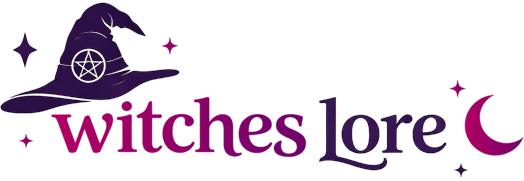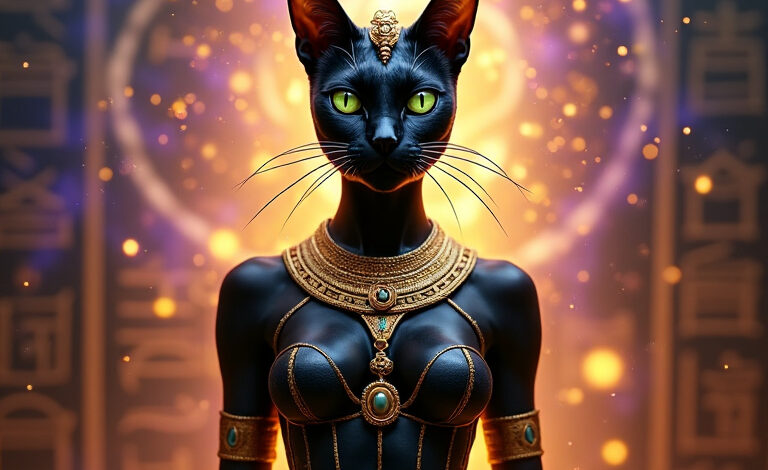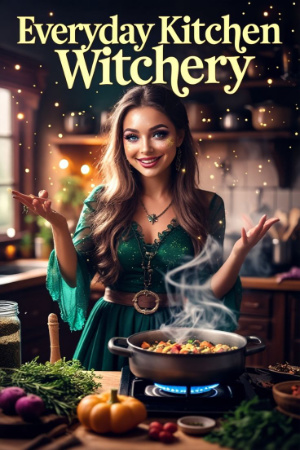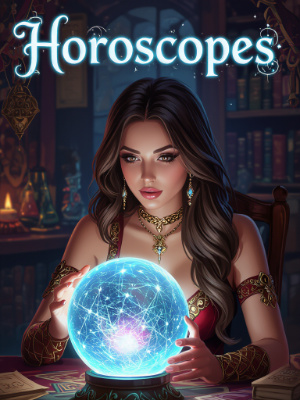
Everyone carries an energy field around them, often called an aura. It’s like a soft glow that surrounds the body—sometimes subtle, sometimes strong—that reflects mood, health, and hidden intentions. When you learn to read someone’s aura, you’re not just picking up pretty colors; you’re tuning into their true self. And in a world full of people with both good and not-so-good intentions, knowing how to spot red flags in someone’s energy can be a game-changer.
Think of it like this: while words can lie, energy doesn’t. Someone might smile at you, say all the right things, and look perfectly polished on the outside—but if their aura is murky, spiky, or full of warning colors, that energy tells you the real story. Reading auras helps you sense what’s underneath the surface before things get messy.
You don’t need to be a psychic prodigy to do this. Everyone can learn to pick up on aura energy, even if you start by noticing feelings or vibes before you see actual colors. It’s less about forcing yourself to see rainbows around people and more about being open, relaxed, and tuned into your instincts. The more you practice, the more natural it becomes.
In this guide, we’ll walk through how to actually read auras, what colors and textures to watch for, and how to recognize red flags that could warn you about manipulative, toxic, or draining people. By the end, you’ll have tools to trust your intuition and protect your own energy field from anyone who doesn’t have your best intentions at heart.
How to Read Someone’s Aura for Red Flags
What an Aura Really Is
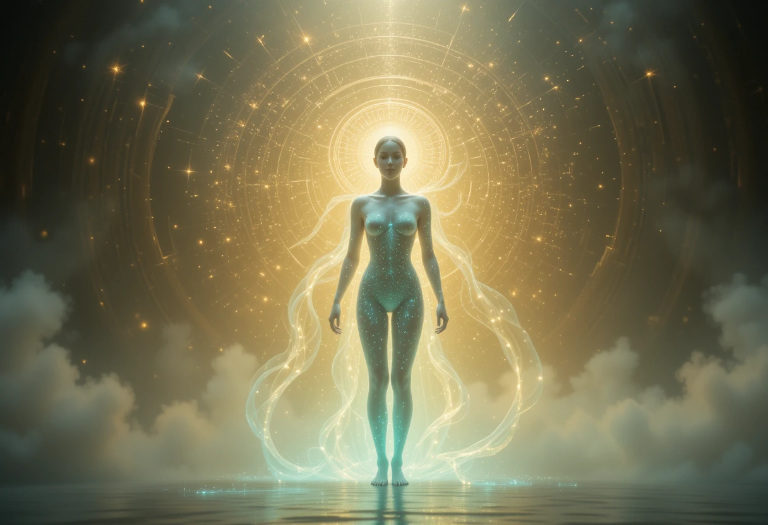
An aura is the energy field that surrounds every living being. It’s not just some mystical glow—it’s the way a person’s inner state spills outward into the world. Think of it like an energetic fingerprint. Just like your body shows signs of stress or joy, your aura does the same. It can shift with emotions, mental state, or spiritual growth, and it can reveal truths people don’t always say out loud.
When someone is relaxed and balanced, their aura tends to feel open and smooth, sometimes bright and vibrant. But when they’re hiding something, stuck in negativity, or running on toxic energy, their aura shows it. This is why aura reading is so powerful—it bypasses masks and filters. You’re tuning into their true frequency, not their carefully curated image.
How to Sense an Aura
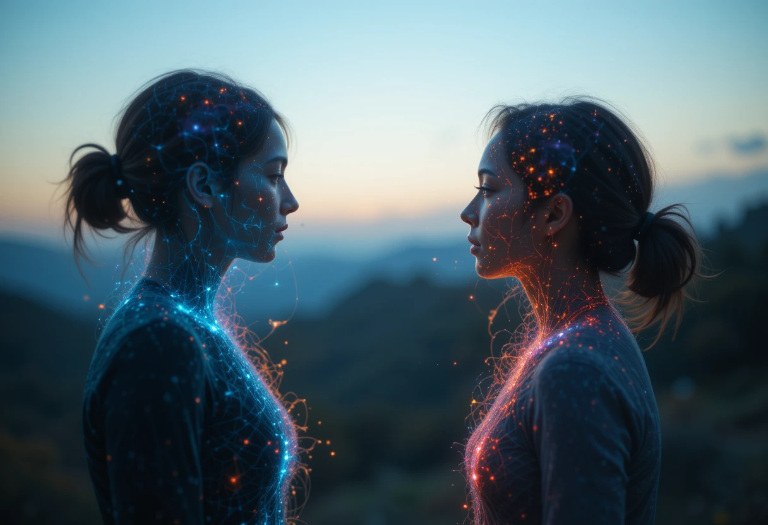
Before you even worry about colors, start with feelings. Notice how your body reacts around someone. Do you feel comfortable, calm, or safe—or do you feel drained, jittery, or uneasy? That’s your first read of their aura. Energy doesn’t lie, and your intuition often picks up signals before your mind catches on.
To practice, spend time looking at people against a plain background, like a wall. Soften your gaze and focus slightly past their body. Over time, you might start to notice a faint outline, glow, or even flashes of color. Don’t force it. The trick is to stay relaxed, curious, and open. With practice, your vision sharpens and the aura becomes more visible.
Common Aura Colors and Their Meanings

Colors carry meaning. While everyone has their own mix, some shades tend to show up when certain emotions or traits are strong. For example:
1. Red
Red is the color of passion, vitality, and strong will. When bright and clear, it shows courage, drive, and a love of life. But when too dark or muddy, it can hint at anger, aggression, or someone struggling with control issues.
2. Orange
Orange reflects creativity, joy, and connection to others. It’s often found in people who are expressive, playful, or deeply social. When dull, it may show burnout, blocked creativity, or feelings of isolation.
3. Yellow
A glowing yellow aura often signals happiness, confidence, and optimism. It belongs to people who inspire others and shine with warmth. But if the yellow looks sickly or pale, it may reveal insecurity or hidden fears.
4. Green
Green is a healing and balanced color, tied to growth and renewal. It’s common in people who are compassionate, empathetic, and connected to nature. If it turns murky, it can suggest jealousy, envy, or resistance to change.
5. Blue
Blue represents calm, truth, and clear communication. Bright blue shows honesty, wisdom, and peaceful energy. If the shade looks cloudy or heavy, it might point to sadness, fear of expressing oneself, or holding back feelings.
6. Indigo
Indigo is tied to intuition, psychic awareness, and deep insight. People with this aura often feel connected to higher truths and trust their inner guidance. When it’s dull, it can show confusion, self-doubt, or avoidance of reality.
7. Violet / Purple
Violet is a deeply spiritual color, linked to wisdom, inspiration, and higher consciousness. It’s found in people on a spiritual path or those who think beyond the material world. If it looks faded, it can suggest spiritual disconnection or escapism.
8. Pink
Pink carries the energy of love, kindness, and compassion. A vibrant pink aura belongs to people who radiate affection and care openly. When it’s washed out, it can mean dependency, lack of boundaries, or hidden pain in relationships.
9. Gold
Gold is rare and powerful, symbolizing divine protection, spiritual mastery, and inner strength. It often shows up in people who are deeply aligned with their higher purpose. If it feels tarnished, it can point to ego or misuse of spiritual gifts.
10. Silver
Silver reflects mystery, change, and adaptability. People with silver in their aura often have heightened intuition and a magnetic presence. But if it feels flat, it can mean scattered energy or difficulty focusing.
11. White
White is the color of purity, clarity, and spiritual awakening. It’s often seen in healers, visionaries, or people going through big spiritual shifts. If the white looks dim, it may suggest exhaustion or disconnection from the higher self.
12. Black
Black isn’t always “bad”—sometimes it means protection or shielding. But when it shows up as blocks or heavy patches, it often points to trauma, negative energy, or someone carrying unresolved pain.
13. Brown
Brown represents grounding, practicality, and connection to the earth. A strong brown aura can mean someone is stable and dependable. But a muddy brown may signal selfishness, materialism, or being stuck in fear.
14. Turquoise
Turquoise blends blue and green, symbolizing healing through communication. It belongs to people who are natural helpers, teachers, or guides. If it appears dull, it can show someone neglecting their own needs while caring for others.
15. Rainbow or Multicolored
Some auras shimmer with multiple colors, showing someone who is versatile, creative, and open to new experiences. It’s a sign of balance and adaptability. But if the colors look chaotic or clashing, it can mean the person is scattered or struggling with direction.
It’s important to remember that aura reading isn’t about making snap judgments. A red aura doesn’t always mean danger—it could just be someone in a fiery, passionate phase. But when certain colors combine with spiky textures or leave you feeling uneasy, that’s when you’re spotting red flags.
Red Flags in Auras: What to Watch For
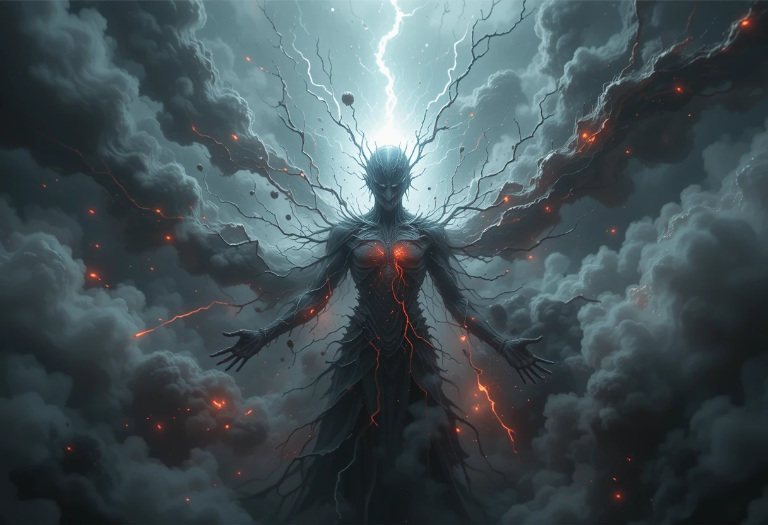
Now let’s get into the real reason you’re here: spotting warning signs. Toxic energy almost always shows up in the aura, even if someone is charming on the surface. Look for:
1. Sharp, Spiky Energy Fields
When an aura feels sharp or spiky, it usually points to hostility, defensiveness, or aggression. Imagine standing near someone and feeling like the air around them is buzzing or prickling—it’s not just in your head. Their energy is literally pushing outward like barbed wire, warning you to keep your distance.
People with spiky auras often thrive on conflict, whether that’s picking arguments, being overly competitive, or needing to dominate every conversation. Even if they seem charming, their energy field can reveal an inner edge that puts others on guard. Trust that uneasy feeling—it’s a sign their presence could stir up drama.
You don’t have to fight this kind of energy. Instead, step back, ground yourself, and decide whether you want that kind of tension in your space. Sharp auras are often a clue that the person is dealing with unresolved anger or insecurity, and it’s not your job to fix it.
2. Dull or Muddy Colors
Auras that appear faded, swampy, or murky often signal dishonesty, manipulation, or someone hiding their true self. Unlike bright, vibrant hues that feel alive, these colors look like they’ve been watered down or mixed with gray. The energy feels heavy, unclear, or slippery.
This kind of aura often belongs to someone who wears a mask—acting one way but feeling another inside. You may notice they tell you what you want to hear but their vibe feels “off.” Your body might tense up or struggle to relax around them, even if they’re smiling at you.
The danger of muddy auras is subtle: they don’t scream “toxic,” but they erode trust over time. It’s a reminder to pay attention to consistency. If what you see in their aura doesn’t match their words or actions, believe the energy first.
3. Dark Patches or Voids
Black spots or empty-looking spaces in someone’s aura often point to repressed emotions, trauma, or parasitic energy. These patches can feel like holes where light should be, pulling at your own energy if you get too close. They aren’t always “evil,” but they’re definitely a red flag to approach with caution.
When someone carries these voids, it often means they haven’t dealt with something heavy. They may project their wounds onto others, cling for validation, or unconsciously drain the people around them. That draining feeling you get when you leave their presence is your energy filling their gaps.
Compassion is good, but you need strong boundaries with these kinds of auras. Helping someone is one thing—being consumed by their unhealed wounds is another. If you feel pulled in too deep, it’s better to step away and protect your own light.
4. Inconsistent or Flickering Auras
An aura that constantly flickers, shifts colors wildly, or feels unstable can be a big red flag. While everyone’s energy changes with mood, instability at this level suggests hidden motives or emotional unpredictability. It’s like watching static on a screen—you can’t quite trust what you’re seeing.
This kind of aura often belongs to someone who plays different roles depending on what they want. They might act sweet one moment and cold the next, leaving you off balance. The inconsistency keeps people hooked because you’re always trying to figure them out.
That sense of unpredictability is the warning. If their aura feels chaotic every time you’re around them, it’s not your imagination. It’s their energy signaling that they aren’t grounded or honest in how they show up.
5. Overly Red or Inflamed Auras
Red in an aura isn’t always bad—it can reflect passion, vitality, or strong emotions. But when the red feels overheated, angry, or dominating, it’s a warning. These auras often radiate intensity that leaves others feeling pressured or cornered.
People with inflamed red energy might have quick tempers, be controlling, or use intimidation to get their way. Even if they seem magnetic, their aura can burn too hot, draining or overwhelming those nearby. You might feel like you’re always “on edge” in their company.
This isn’t about avoiding people who are passionate or lively—it’s about noticing when passion tips into aggression. If the red feels scorching instead of warm, trust that signal. It’s usually a sign that this person may lash out or try to dominate.
6. Aura Feels Heavy or Suffocating
Sometimes an aura doesn’t look unusual but feels heavy, dense, or suffocating. Being near it can feel like trying to breathe underwater. This is often a sign of possessiveness, control, or someone trying to trap others in their energy.
These people may cling too tightly, demand attention, or guilt others into staying close. The aura’s heaviness reveals their fear of losing control, and they often project that weight onto everyone around them. You might notice yourself feeling drained, anxious, or trapped after spending time with them.
The heaviness is your signal that their energy isn’t free-flowing—it’s sticky. Protect yourself by setting strong boundaries. You can care for someone without letting their suffocating aura wrap around your own.
7. Aura Feels Cold or Empty
Most healthy auras feel warm, vibrant, or alive. But sometimes you’ll come across someone whose energy feels cold, hollow, or lifeless. It’s like standing near a space heater that’s been switched off—the warmth just isn’t there.
Cold auras often signal disconnection, lack of empathy, or emotional numbness. People with this kind of energy may come across as distant or even predatory, because they’re missing the warmth that makes connections feel safe. You might feel like they’re studying you instead of engaging with you.
This is one of the trickiest red flags because cold energy can be wrapped in charm. But if you sense that hollow feeling again and again, trust it. It’s your body warning you that something vital is missing in their aura.
8. Jagged or Chaotic Patterns
Auras aren’t always smooth—sometimes they ripple, spark, or flow like water. But when the energy looks jagged, fractured, or chaotic, it often signals inner turmoil spilling outward. It can feel overwhelming, like standing next to a storm cloud ready to burst.
This chaotic energy often belongs to someone who thrives in drama or constantly stirs conflict. They may create chaos in relationships, work, or friendships, leaving everyone else to deal with the fallout. Their aura shows the storm before the lightning strikes.
Even if you feel drawn to their intensity, notice how it leaves you feeling afterward. If you’re constantly drained, confused, or emotionally off balance, their chaotic aura is pulling you into their storm.
9. Aura Pulls or Hooks Into Yours
Some auras don’t just exist around a person—they actively reach out, latch on, or try to hook into yours. This can feel like cords or sticky threads pulling at your energy field. It’s usually a sign of manipulation, dependency, or someone trying to feed off your energy.
People with this kind of aura may love-bomb, overwhelm you with attention, or make you feel guilty for pulling away. Their energy tries to keep you entangled so you can’t fully detach. It’s less about connection and more about control.
If you sense these hooks, it’s vital to cut the cords energetically. Visualize releasing their grip and surround yourself with light. Real connection doesn’t feel like being drained—it feels balanced.
When you pick up on these patterns, trust them. They’re your warning system.
How Aura Red Flags Feel (Not Just Look)
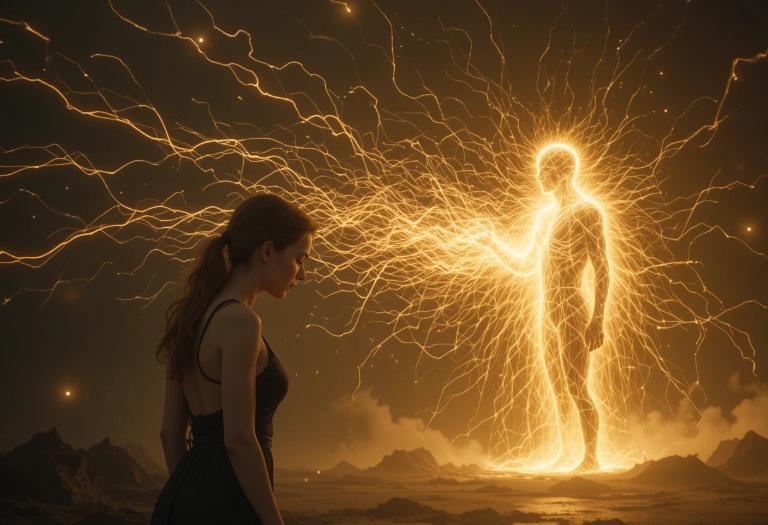
Sometimes you won’t actually see a red aura warning—you’ll feel it. Your body is a built-in energy detector. Pay attention if you:
1. Tension in Your Body
You might notice tightness in your shoulders, neck, or chest when near someone. This tension often comes from their anxious or aggressive energy spilling into your field, signaling that their aura isn’t safe for you.
2. Sudden Fatigue
Feeling drained or lethargic around a person is a classic sign. Their energy may literally pull from yours, leaving you tired even after a short encounter.
3. Uneasy Gut Feeling
A pit in your stomach or butterflies that don’t go away can indicate hidden danger or dishonesty. Your intuition is responding to subtle cues that your conscious mind might miss.
4. Lightheadedness or Dizziness
Some toxic auras create an energetic imbalance that makes you feel dizzy, disoriented, or ungrounded. It’s like your own energy is being disrupted by theirs.
5. Emotional Overload
You might suddenly feel waves of sadness, anger, or anxiety that don’t belong to you. This happens when someone’s unprocessed emotions seep into your aura.
6. Difficulty Concentrating
When near a manipulative or chaotic energy, your thoughts may scatter or focus may disappear. Their aura can literally cloud your mental clarity.
7. Feeling “Heavy” or Pressured
Some auras carry emotional weight, making you feel stuck or burdened. It can feel like an invisible hand pressing down on your energy, a subtle but persistent warning.
8. Irritability Without Cause
You might find yourself snapping or feeling agitated for no reason. This often happens when you’re picking up low or combative energy from someone else.
9. Anxiety or Restlessness
A person’s aura can trigger your nervous system, leaving you jittery, restless, or unable to relax. This is usually a subtle alert that their energy is unstable.
10. Feeling Emotionally Drained After Interaction
Even a short conversation can leave you depleted. When you notice repeated patterns of exhaustion around the same person, it’s a red flag that their energy is consuming yours.
11. Sudden Craving for Distance
You may feel a strong, almost magnetic pull to step away or leave the situation. Trust this impulse—it’s your energy telling you to protect yourself.
12. Confusion or Foggy Thinking
Their aura might cloud your judgment, leaving you unsure of what’s real or right. If you feel mentally foggy around someone, their energy may be intentionally or unintentionally manipulative.
13. Overwhelming Attraction or Repulsion
Sometimes red-flag energy feels magnetic—you’re drawn to it despite discomfort—or intensely repulsive. Both sensations are signals that their aura is affecting your energetic boundaries.
14. Pressure to Agree or Conform
If you feel pushed to say yes or follow their lead, it can mean their energy is trying to dominate yours. This subtle manipulation often shows up before more obvious control tactics.
15. Restless Energy in Your Hands or Feet
You may feel jitteriness or tingling in your extremities. This physical signal often accompanies strong or invasive energy fields trying to pull you into their frequency.
16. Experience headaches or body tension
You might notice discomfort in your head, shoulders, or neck after spending time with someone. Their energy can create subtle strain that your body picks up on before your mind even realizes it.
17. Feel drained, heavy, or fatigued
Being near certain people can leave you unusually tired or weighed down. Their aura may pull on your energy, leaving you physically and emotionally exhausted even after a short interaction.
18. Sense a downward pull or unease
Sometimes, even if someone seems friendly or “nice,” their presence can feel oppressive or draining. Your intuition detects that their energy is pulling at yours in a way that unsettles you.
These sensations are just as valid as seeing colors. Your energy is reading theirs, and the reaction is your built-in protection system.
Protecting Yourself from Toxic Auras
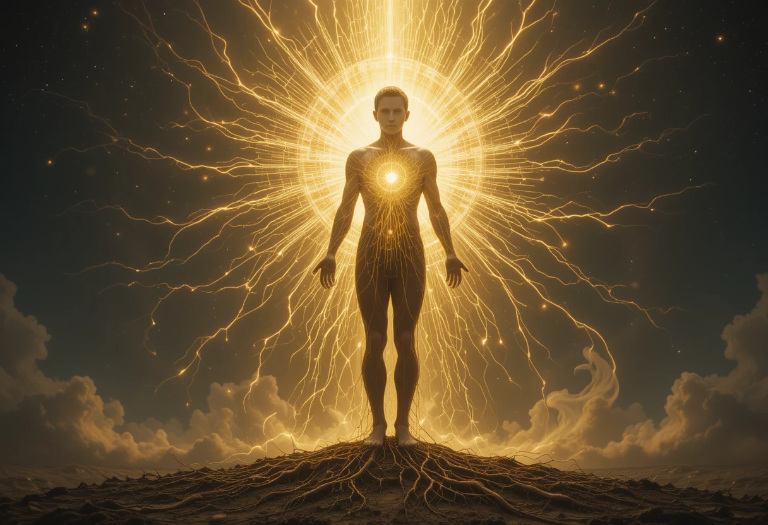
Once you notice a red flag in someone’s aura, the most important thing is to protect your own energy. Start by grounding yourself—visualize roots growing from your feet deep into the earth, anchoring you firmly and drawing in stability. This simple exercise helps you stay centered, no matter how chaotic another person’s aura feels.
Next, imagine a protective shield of light around you. White or golden light works beautifully—envision it forming a barrier that allows positive energy in but keeps harmful energy out. Some people like to enhance this with crystals like black tourmaline, obsidian, or smoky quartz. These tools aren’t magic in themselves, but they can help you focus and maintain awareness of your boundaries.
Remember, protection isn’t always about staying physically close. Sometimes it’s about creating space. Not everyone in your life needs to be engaged with, no matter how “friendly” they seem. Walking away or limiting interaction can be the strongest and most effective form of self-preservation.
Finally, maintain awareness of your own energy as you protect yourself. Notice when you feel lighter, calmer, and more in control. Trust that feeling—your aura will naturally respond to protection and grounding. By keeping your energy strong, you prevent others from draining you and maintain clarity in all your interactions.
When It’s Just Temporary Energy
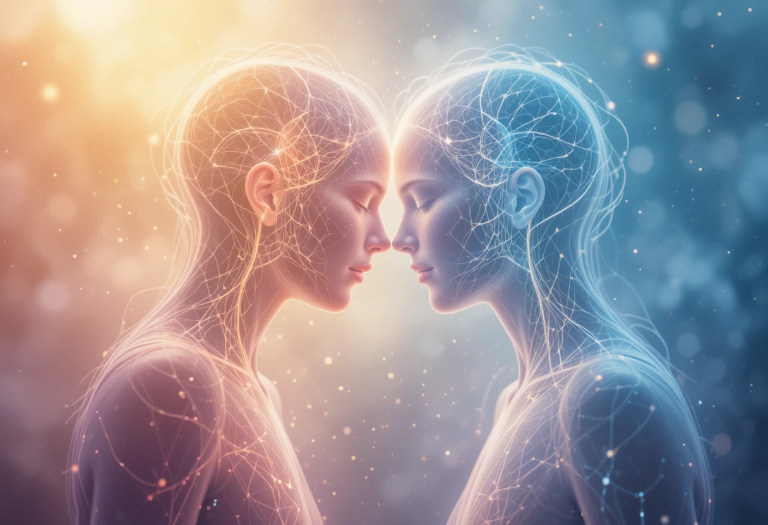
Not every dark or heavy aura signals danger. Sometimes someone’s energy is dim or blocked because they’re grieving, stressed, or physically unwell. It doesn’t necessarily mean they’re manipulative or toxic—it just means they’re struggling and carrying extra weight. Compassion and empathy matter here, but so does discernment.
Look for patterns over time. If someone’s energy occasionally flickers dark or heavy but returns to normal, they’re likely going through a temporary phase. However, if the energy is consistently oppressive or leaves you feeling unsafe, your instincts are sending a clear warning. This is the difference between someone needing support and someone whose energy may harm you.
It’s also important to pay attention to how you feel in their presence. Your body and intuition pick up on subtleties that words can’t hide. If anxiety, fatigue, or tension creeps in whenever you’re near them, it’s a cue to take action, whether through setting boundaries or stepping back completely.
Finally, remember that compassion doesn’t mean sacrificing your own energy. You can acknowledge someone’s struggles while still protecting yourself. Temporary energy shifts are normal, but habitual, draining patterns are red flags that demand your attention and care.
Practicing Your Aura Reading Skills
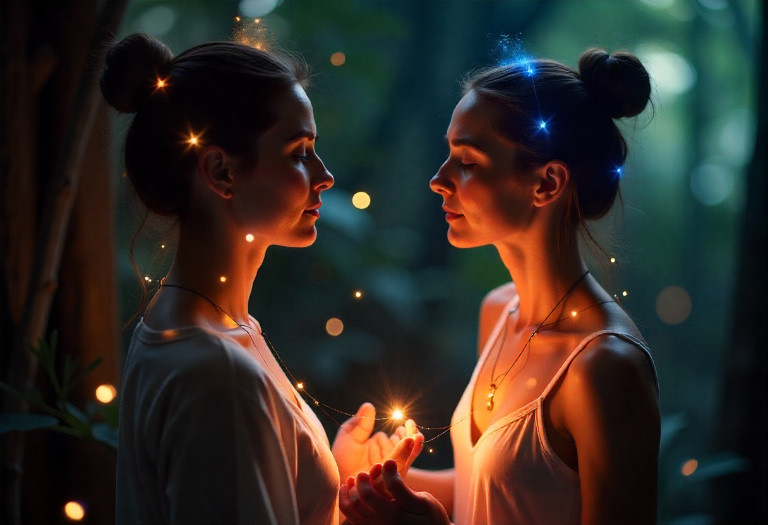
Aura reading is a skill that improves with practice, patience, and self-awareness. Begin with people you trust—friends, family, or even your own reflection. Observe how their energy shifts depending on mood, environment, or conversation. Take note of how it feels, looks, or even affects your own body.
Keeping a journal is a powerful tool. Record your observations about aura colors, textures, and sensations alongside real-life interactions. Over time, you’ll start noticing patterns and making connections between the energy you sense and the person’s behavior or intentions.
Consistency is key. The more you practice daily or weekly, the more sensitive your perception becomes. You’ll start to pick up on subtle cues before they become obvious, and your intuition will guide you more confidently in navigating energy.
Finally, practice self-reflection as well. The clearer your own energy is, the easier it becomes to read others. By grounding, protecting, and tuning into your own aura, you sharpen your ability to notice red flags and positive energy alike.
Why Aura Reading Matters for Relationships
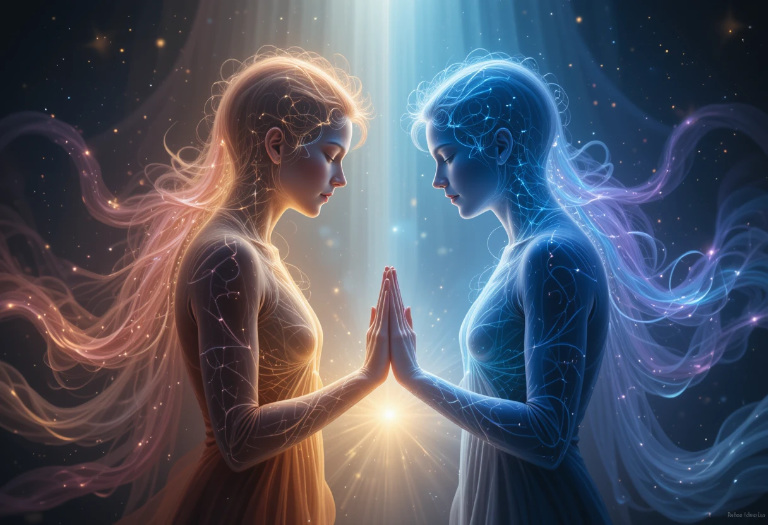
At its heart, aura reading is about self-protection, clarity, and understanding the energetic landscape of your life. Every connection—friendship, romance, work—carries an exchange of energy, and being aware of that exchange can prevent you from being drained or manipulated.
Ignoring red flags can leave you entangled in draining or harmful dynamics without even realizing it. Aura reading helps you spot subtle warning signs early, giving you the opportunity to choose who deserves your time, trust, and energy.
When you trust your own senses, you empower yourself. You naturally attract people whose energy aligns with yours and create distance from those who consistently bring imbalance. Aura reading isn’t about judgment—it’s about alignment and protection.
Finally, seeing and feeling energy is a tool for a healthier, more intentional life. By understanding auras, you navigate relationships with awareness, choose connections that nurture you, and maintain the integrity of your own energy field. Your relationships become not just safer but richer, more authentic, and more fulfilling.
Trusting What You See and Feel
The more you practice aura reading, the more you’ll realize your energy is always guiding you. The colors, textures, and vibes you sense aren’t random—they’re signposts helping you navigate human connections. When you pay attention, you can avoid toxic patterns and surround yourself with people who uplift you instead of drain you.
At the end of the day, learning to read someone’s aura is really about trusting yourself. Your intuition is your strongest tool. Keep listening, keep practicing, and let your inner senses lead you toward the people who glow with authenticity—and away from those whose energy waves red flags.
